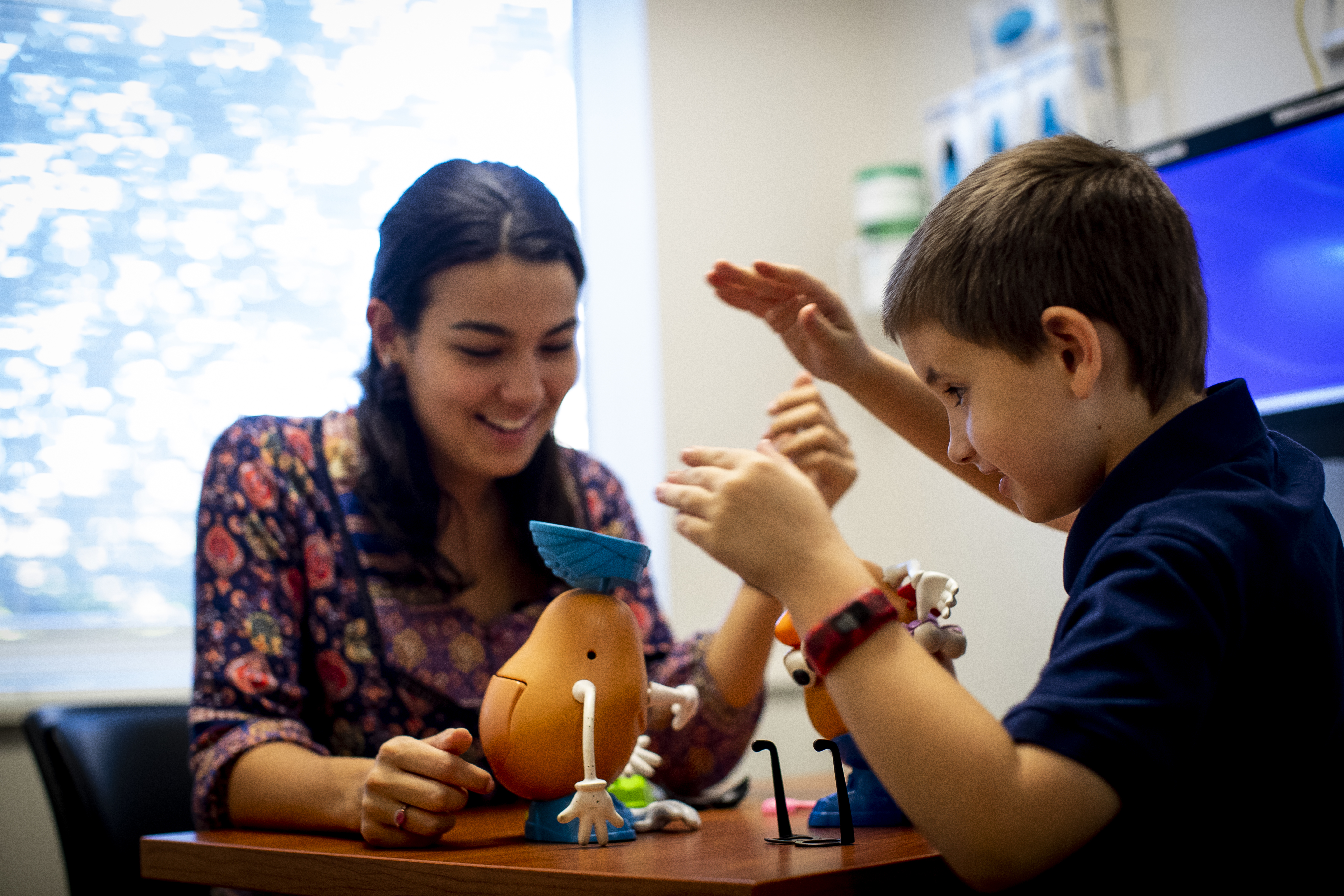Speech Therapy Tips for Children
 Parents watch their children for each milestone to be hit to help guide them to whether or not their child is within “average” range in regards to height, weight, and developmental skills. However, when it comes to speech or communication milestones, the lines can get a little blurry. How can someone tell if their child needs to see a speech-language pathologist (SLP)?
Parents watch their children for each milestone to be hit to help guide them to whether or not their child is within “average” range in regards to height, weight, and developmental skills. However, when it comes to speech or communication milestones, the lines can get a little blurry. How can someone tell if their child needs to see a speech-language pathologist (SLP)?
The Speech-Language Institute (SLI) of Salus University believes in a parents’ ability to observe their child-if they think their child is not meeting milestones or progressing like other children in speech, SLI suggests an evaluation and the earlier, the better.
“It doesn’t happen as often these days, but sometimes I do hear that doctors tell parents to wait – don’t,” said Robert Serianni, MS, CCC-SLP, SLI clinical director .
If there is an inkling something isn’t quite right in a child’s communication skills, Serianni suggests seeking an assessment with an SLP to fully understand the child’s strengths and challenges.
SLPs can help develop an individualized plan of care and will spend the time teaching parents tips to improve their children’s ability to access the world around them. They can help teach children new vocabulary and how to use that knowledge to follow directions, answer questions, and participate. SLPs also work with children to teach them social language skills so that they can more appropriately participate in conversations with others.
Besides seeking professional evaluation and treatment for possible communication disorders, the American Speech-Language-Hearing Association (ASHA) suggests the following tips to help to continue to develop pediatric communication skills:
 For newborns to two year olds:
For newborns to two year olds:
- Waving
- Gestures like pointing
- Enunciating sounds like “ba, ma, da”
- Respond when your baby laughs or makes faces
- Read to them
How a SLP can help: They work with children to help them annunciate and articulate (the ability to move the tongue, jaw, lips, and palate).
Two to four year olds:
- Model correct speech to your child
- Cut out pictures and categorize them such as “things you can eat” or “things you can play with”
- Ask questions that have a choice such as, "Do you want to wear your red shirt or your blue shirt?"
- Show them pictures of familiar places or faces
- Sing simple songs and nursery rhymes
How a SLP can help: Speech intelligence is how well other people can understand another person’s words. SLP’s help to teach children how to produce the specific speech sounds or sound patterns he or she is having difficulty with, thus increasing overall speech intelligibility.
Four to six year olds:
- Pay attention to a child when they speak
- Make sure you have the child’s attention before you talk to them
- Praise your child when he/she tells you something and show that you understand his/her words
- Use directional words such as "first," "middle," and "last" or "right" and "left"
- Go grocery shopping together and talk about what you will buy, how many things you need, and what you will make. Talk about sizes, shapes, and weight
 How the Speech-Language Institute Can Help Your Child
How the Speech-Language Institute Can Help Your Child
SLI offers a wide range of pediatric assessment and therapy in the following ways:
- Speech, voice & fluency such as difficulties with vocal pitch (frequency), volume (intensity) and/or quality (tone), hoarseness, harshness, breathiness, strained voice quality
- Articulation, such as distortions or omissions; difficulty producing specific individual sound(s) correctly in words, sentences or conversation and difficulty with a pattern of sounds
- Swallowing & feeding impairments of the oral preparatory, oral, pharyngeal and/or esophageal phases of the swallow (dysphagia)
- Memory & cognitive skills like attention, memory (short-term or working memory and long-term memory), reasoning, problem solving
- Social communication, the use of language in social contexts; understanding and using non-verbal communication skills, for example: eye contact, facial expression, gesture, proximity and distance
If you feel your child may need a speech assessment, contact SLI to schedule an appointment.